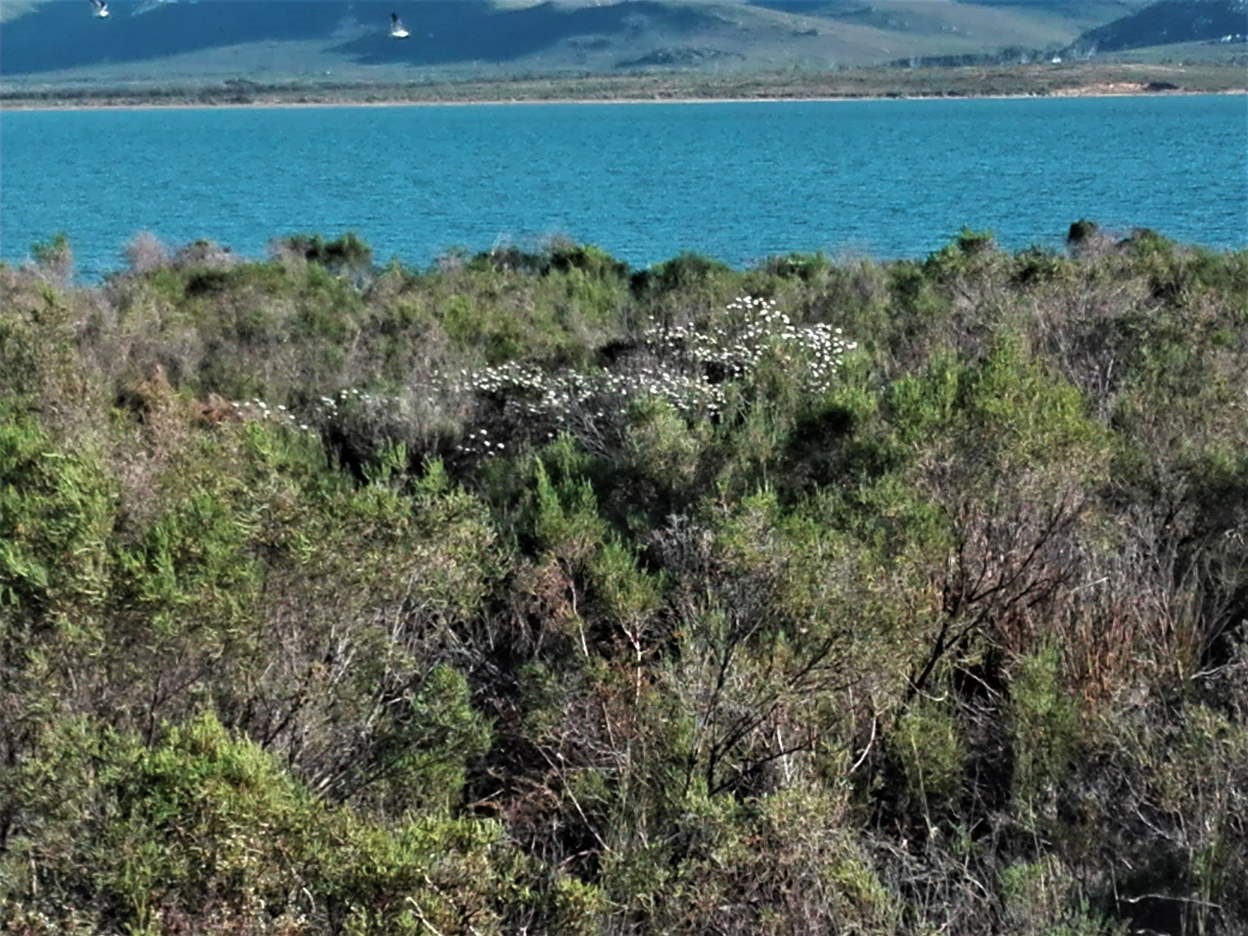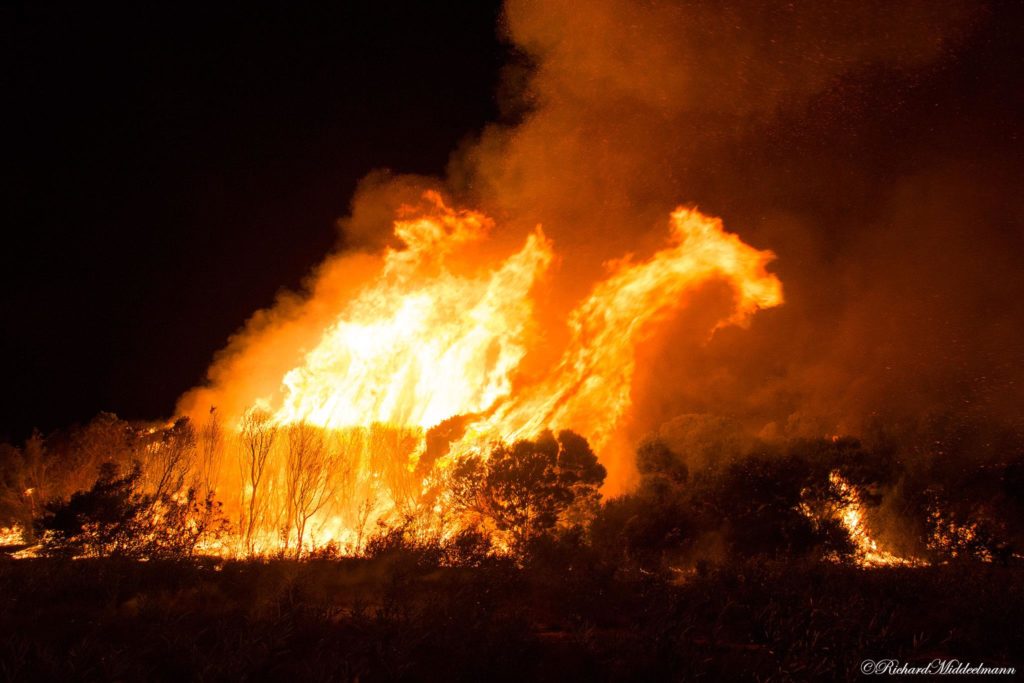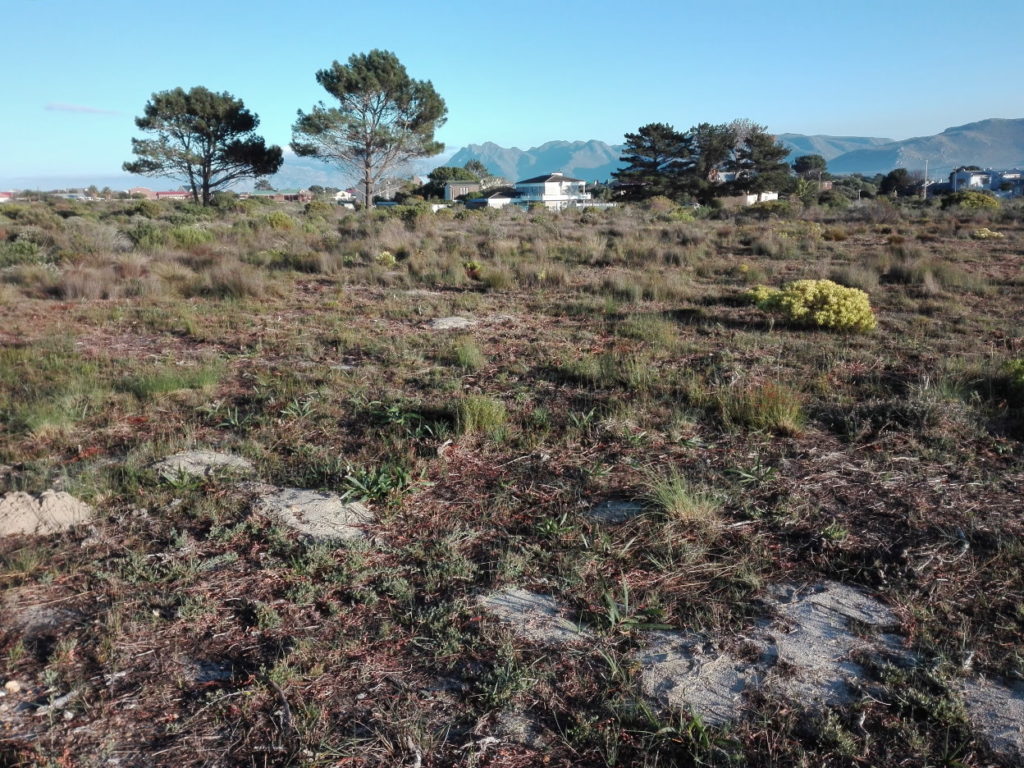
Update of the data gathered from the Bot Challenge, which includes data from from other clearing operations conducted by Mike Austin and Bruce Beyer where the data was measured. The previous post Botfriends Challenge includes some of this data.
The Botfriends challenge was issued by Bruce Bayer, to the community of Botfriends for the clearing of alien species on public land, in Fisherhaven, with a generous donation of R2 000.
Each area cleared was rated in terms of how dense the alien infestation was, previous clearing history and costs established accurately, for initial clearing and follow-up clearing. This data is not readily available in the literature and will be valuable in extending the clearing operation and establishing cost effective techniques.
The data points (58 areas) below add up to a total 46.03ha, which includes repeat clearing on 16ha done by the challenge.
F Severely invaded areas with little or no indigenous vegetation
E 1-2m plants, producing seed, dense, 80-100% invaded, very poor previous clearing
B1 Regrowth from stumps and seedlings, high density, poor previous clearing
B Initial clearing, some regrowth from stumps and seedlings, medium density
C 2nd Stage. Scattered plants after initial correct clearing
D 3rd Stage. Follow-up, few seedlings and missed plants
The top line (F) are very small areas which were 100% invaded and were done to establish how very expensive these methods and techniques would be. Three points on this graph are listed as R1/m squared or over R10 000 per hectare (ha). Some of these were four times that. Anything above R1/m squared requires some other method to solve the problem. We established that the indigenous seedbank was still in existence and with follow up the costs would be in the range R5 000 per ha. There are hundreds of hectares that fit into this category around Fisherhaven and Hawston. A hot fire burning all the vegetation to the ground (more vigorous than the fire between Fisherhaven and Hawston of 2018), would be a start. The seedbank would not be damaged and most of the nutrients would be returned to the ground. Their was vigorous seedling regrowth of alien plants, Port Jacksons, Myrtle and Hakea with some indigenous regrowth. If this is followed by clearing of seedlings within the first year costs are reasonable. In the second year costs would reduce to around (B or C). Timing of follow ups is critical. Most of the area burnt in 2018 and is now worse than it was before the fire, both in number of plants and greater volume of material. The area within the study has smaller plants with a number of indigenous plants. No regrowth of stumps but in patches within the area with many Alien species. The follow up is overdue, but should cost less than half the initial cost.


It is interesting to note that the areas that were initially bombed from helicopter are now worse off than the areas where the fire was allowed to burn. The reason for this is that the fire burnt through these areas anyway but did not destroy the base of the Port Jacksons and these sprouted much more quickly and grew much better than new seedlings. A similar situation pertains to mowed areas with a brush cutter.
The second line (E) represents areas where some indigenous vegetation is present and should be preserved to supply some competition to seedling regrowth. An advantage is that the competition supplied is more effective against the alien species. The indigenous species have adapted to be able to grow as seedlings even with the presence of mature plants. Recovery in the early stages is thus better. Again timing is critical, if the alien seedlings establish themselves they then over shadow indigenous plants and begin to to outcompete them. If left without proper follow up, costs begin to rocket and we end up with the situation in (F). This also clearly illustrates that costs of poor clearing techniques can triple the costs of repeating the operation. This has been clearly demonstrated in other areas in Fisherhaven.

The (B) lines were areas that had been cleared, but had been left for to long for follow up clearing. Initially these areas, B & B1 were grouped together but it soon became apparent that they should be split into (B1) those areas where the initial clearing had not been great. Done by contractors with no supervision or by local government. Costs of proper clearing varied from R2 500 – R3 200/ha. The (B) areas had been done by, usually volunteers with some good supervision. Follow up clearing varied between R500 – R2 500/ha. The biggest problem with both these categories was that they had been left to long for follow up clearing.

Category (C) was areas recently cleared by others or ex (E, B1 or B areas) cleared with the right techniques and supervision. Category D was all areas previously cleared within the project and repeated with timely follow-ups. These varied from R40/ha to a maximum of R750/ha. At the lower end the time walking and looking for the odd plants to remove cost more than the actual removal. This is the maintenance level which would probably last about 10 years. Indigenous plants are well established and outcompete seedling establishment of aliens. A greater biodiversity of indigenous plants is been established, some of the indigenous species take years to re-establish themselves and seem to require a clean stand of indigenous pioneers to be established before they grow or return to an area.

The update data from the Bot Challenge bodes very well for long term clearing of aliens. Other data has shown the alien seedbed in the soil naturally deteriorates to very little after about 10 years. The indigenous seedbank seems to persist in the soil for 20 years, confirmed in a number of research papers in the Fynbos. However, infestation from surrounding areas is usually a problem and just one Port Jackson produces thousands of seeds each year. The advance of aliens into well managed indigenous vegetation is reasonably slow. However, the spread of aliens into new areas that have been badly managed or disturbed is alarmingly fast. Timely follow ups are key and the lack of timely follow ups can destroy an operation to clear alien vegetation in as little as three to four years.
Botfriends ran out of money early 2020 to continue the Challenge. Botfriends partially collapsed in November 2020 and only started operating again in October 2021. Some follow up work was paid for and done privately in 2021. This data is from 4.787ha and is included above.
As the update on data from the Bot Challenge confirms, there is an urgent need to follow up clearing on the 30ha worked on by Botfriends. This is to consolidate the work already done in clearing of alien species in Fisherhaven and save all the donated money already spent. In the past sporadic clearing was done and then with little or no follow up the areas started to revert to what they had been before. At present on the 30ha, much of it is a good state, but with scattered plants mature enough to produce seed.
The costs above are direct costs using donated equipment. Supervision, training and data gathering and processing was done free of charge. Costs /ha would be higher on a larger project. Yet even with costs added for the supervision etc the costs are 20-30% lower than other costed projects. The most important facts established on this project were the correct techniques and the relative costs involved with different categories.
A separate update on the data from the Bot Challenge on the improved techniques follows.

Recent Comments